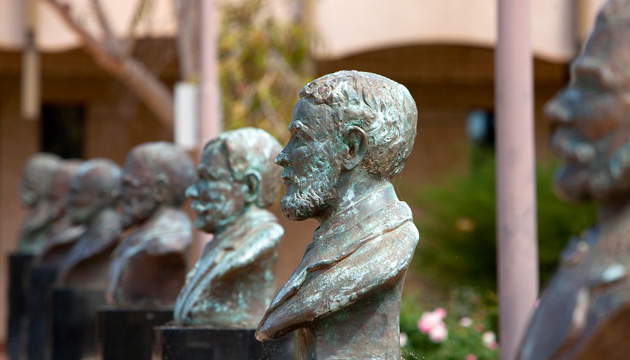The rapid rise and subsequent decline in the fortunes of Broken Hill, NSW, are intimately connected with the fortunes of one of its founders, Philip Charley.
Story by Paula Stevenson
The first images that greet travellers to Broken Hill today are the mullock heaps and disused headframes – stark reminders of the mining origins of this remote outback city.
In recognition of this history, sculptures of the Syndicate of Seven – seven men who founded the Broken Hill Proprietary Company (BHP) – proudly stand outside the council chambers.
One of the seven was Philip Charley. At the ceremony to unveil the busts in 2008 his grandson John Harnett praised the sculptor Geoff De Main. “This is a great day for our family,” he told the local newspaper. “I was seven when my grandfather died. I can say that the likeness is great – the ears are exactly as I remember then.”
The syndicate also included George McCulloch, Charles Rasp, George Lind, James Poole, David James and George Urquhart. When BHP’s initial shaft revealed disappointing results, Urquhart, Lind and Poole sold their shares, the latter to Sir Sidney Kidman for a herd of bullocks. They should have waited, because in January 1885 Charley found the first silver chlorides nearby. The company issued new shares on various stock exchanges in 1885.
From 16 employees the company grew to 3200 by 1907, and the population of the town swelled. Smelting began in 1886, and by 1890 the company was worth more than 10 million pounds and paying massive dividends.
For many of the original investors, this meant a large rise in their fortunes. For the young Philip Charley, it must have seemed like a dream. He had lost his mother at the age of seven and spent five years in institutions, until he was indentured to a Melbourne lawyer. Office work and the climate did not suit his constitution and doctors advised him to take himself to the dry Australian interior.
At the age of 14 he was taken on as a boundary rider at Mount Gipps station, on the site of present-day Broken Hill, under McCulloch, where he worked for the next eight years. In 1883, Rasp, who also worked at Mount Gipps, found mineral ore. Station workers formed a seven-person syndicate to open a mine. After the float of BHP, Charley sold half his shares and was estimated to be worth some 800,000 pounds.
This story excerpt is from Issue #109
Outback Magazine: Oct/Nov 2016










